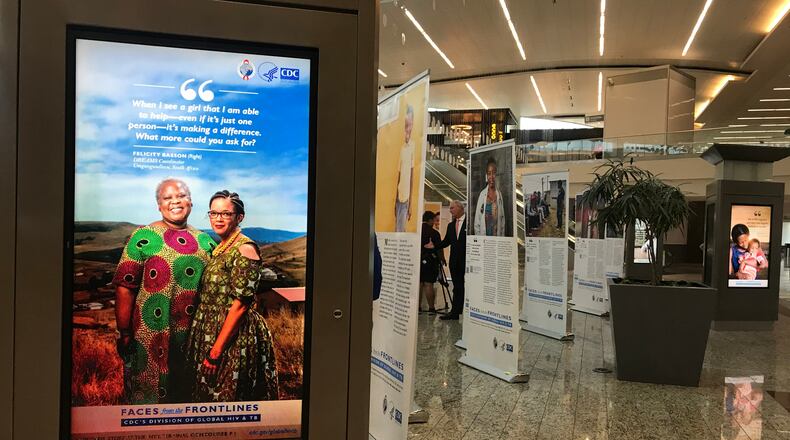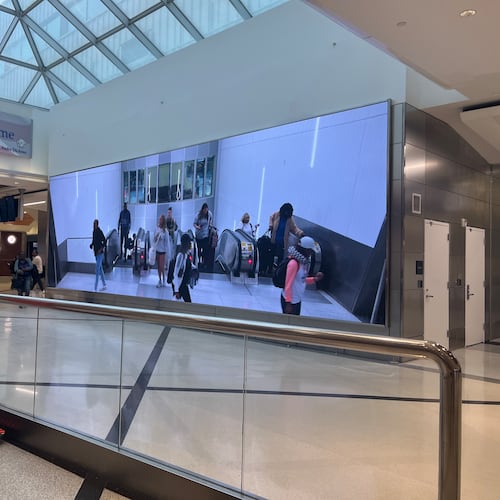Some travelers at Hartsfield-Jackson International Airport will see a new photo exhibit on the U.S. Centers for Disease Control and Prevention's work in South Africa this month.
The displays in international Concourse F and on digital displays throughout the airport this month show photos and stories on the CDC's work to combat HIV and tuberculosis.
The CDC and Hartsfield-Jackson called the photo exhibit part of a partnership between the federal health agency and the airport.
Hank Tomlinson, director of the CDC’s division of global HIV & TB, said he travels through Hartsfield-Jackson at least two times a week --and sometimes up to five or six times a week.
“Without a resource like this in our backyard, we would not be able to make the kind of contribution that we do at CDC to securing global health and working on domestic preparedness,” Tomlinson said. With HIV and TB, “our job is to end these epidemics.”
Photographer Thom Pierce in September 2018 traveled with the CDC in South Africa, the center of the global HIV and TB epidemics, to produce the photos on display at the Atlanta airport now.
Tuberculosis is the leading cause of death from infectious disease worldwide, according to CDC director Robert Redfield.
Tomlinson said one of the displays is about a prevention program in a high-risk community in South Africa where girls have a 50 percent chance of graduating from high school and an 80 percent chance of getting HIV. A program in the community supported by the CDC is aimed at keeping young girls in school, which can help decrease someone’s likelihood of getting HIV, he said.
“If she has more income, she doesn’t have to do things that might put her at risk,” Tomlinson said. “If she believes that tomorrow is possible and that tomorrow is positive, it means she’s not just living in a very present-focused way and making decisions that don’t include consequential thinking. And so it sort of changes her perspective about what the future could behold.”
Redfield said the public should “take pride” in the programs, which are paid for with federal tax dollars. But he also added that “public health in our nation, just to be honest and straightforward, is highly under-invested in.”
He also said he hopes the stories on display "will inspire some young people to realize that what a great opportunity it is to think about getting into some aspect of global health service." He noted the CDC has a two-year public health associate paid training program for college graduates.
About the Author
The Latest
Featured




